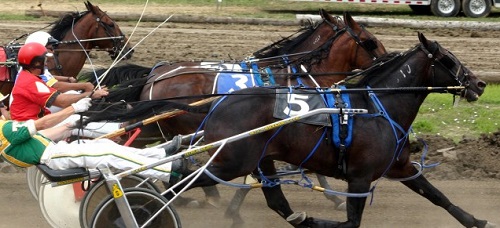Harness Racing Betting in Detail for Punters

Harness Racing is performed by horses and includes two styles of movement: trotting and pacing. This is referred to as the horse’s gait. A trotter moves its legs in diagonal pairs – right front and left behind, as well as the opposite pair the other way around. When pacing, the horse will move its legs forward laterally – right front and right hind together; left front and left hind together.
Many horse owners prefer pacers, as this is a more natural movement for the horse. Trotting is slightly more complicated for the animal. Bookmakers too, tend to favour pacers for this very reason. Whether a trotter or a pacer, the horse will traditionally pull a two-wheeled vehicle resembling a horse-cart, called a sulky. Harness racing is restricted to Standardbred horses in most regions of the world where the sport is practised.
Noteworthy Events
Various participating countries host a selection of popular harness racing events at the best online sports betting. In the United States of America and Canada, the Breeders Crown is an all-time favourite event, especially for sports bettors. The Breeders Crown is a series of twelve races, making provision for horses of various ages, genders and gaits.
The variety of categories create various betting combinations – hence the popularity amongst bookmakers and bettors.
More favourites include the Inter Dominion Series (Australia and New Zealand), the Victory Derby, the New South Wales Derby and the New Zealand Derby.
Winning Strategies
There are a number of issues to consider when placing a bet on harness racing. Bettors – especially newbies – would do well to keep these in mind when deciding on where to wager the big bucks.
Drivers
Despite the overall focus on the horses themselves, it is imperative for bettors at https://bettingsitesonline.net.au/racing to know the ins and outs concerning the drivers too. When monitoring past performances, it is useful to consult the Universal Driver Rating. The Universal Driver Rating rates each driver according to starts (both good and bad), wins, second places as well as thirds.
Class
Horses managing to hold their own in higher classes, tend to become race favourites and regular winners. It must be kept in mind though, that there are many factors influencing the circumstances of each individual race – track, weather conditions, driver, etc. all play a role.
Form
Harness racing horses generally race more frequently than thoroughbred horses. This aids them to keep their form longer, and for the outcomes of the races that they compete in to be more consistent – in other words, with fewer surprises. A sudden change in a harness racing horse’s form can usually be narrowed down to specific issues. The horse may have been competing at too tough a level (being squared up against horses of a higher class), competing at a track that historically has a poor record regarding the particular horse, or even a sudden switch in driver or trainer. Horses are animals and as such are sensitive to sudden changes in handling and training.
Consistently betting on horses historically known to perform well under similar conditions, is the key to success.